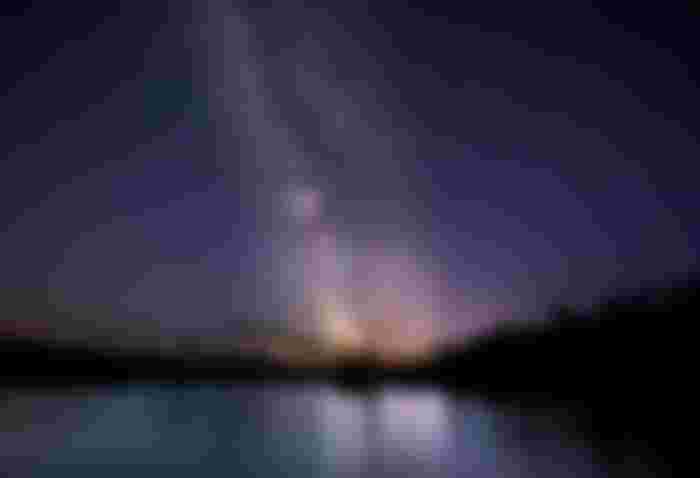What is a “Black Moon?” Although it can also be the second New Moon in a single calendar month—which happens sometimes—a “Black Moon” is better defined as the third New Moon in a season with four New Moons.
Either way, it’s a calendar quirk. More importantly, the New Moon occurs at 02:41 UTC and makes sure that this week is perfect for stargazing and looking for the Milky Way.
How And When To See Your Own Galaxy As The Milky Way Reaches Its Brightest And Best Of 2020.
I write about science and nature, technology and travel, stargazing and eclipses.
The Milky Way in all of its glory over Two Jack Lake in Banff National Park, Alberta Canada.
The Milky Way in all of its glory over Two Jack[+]
GETTY
More From Forbes
x
Summer is the best time of year for seeing the Milky Way from the northern hemisphere—and parts of August are the very best.
We’re just coming up on August’s “Milky Way” window, arguably the best 10 days of the year for viewing our galaxy.
So clear your diary this weekend and get outside to as dark a site as possible to see your home galaxy in all of its glory.
Visibility is all about light pollution.
Phases of the Moon in August 2020
Full Moon: August 3 (rises around midnight)
Last Quarter: August 11 (rises around midnight)
New Moon: August 18 (completely Moon-free night skies)
First Quarter: August 25 (is already bright in the sky at darkness falls)
That makes August 11 through August 20, 2020 the best time to look for the Milky Way in August 2020.
Milky Way at the Old Barn
The galactic centre area of the Milky Way in[+]
VWPICS/UNIVERSAL IMAGES GROUP VIA GETTY IMAGES
What time of night is the Milky Way visible?
This is the real beauty of going looking for the Milky Way during August because it’s visible right after dark.
Although it can be seen from May through October, it’s not always ideally positioned; in May you have to wait for just before dawn, in June you can watch it rise in the east, in July and August it’s “up” after dark, by September you can watch it sinking in the west shortly after dusk.
In mid-August the Milky Way is visible at 10 p.m. from mid-northern latitudes, and is acting overhead by midnight to coincide with true darkness. It’s the perfect time to see it.
How to find the Milky Way
Wait until it gets dark.
Let your eyes adjust to the darkness (by not looking at a phone for 20 minutes).
Look south.
That’s it!
If you need a few visual helpers—which you may do if you’re not in an absolutely dark place free from light pollution—look for Jupiter and Saturn.
You can’t miss Jupiter—it’s shining super-bright in the south right after dark, with Saturn slightly to its east.
The Milky Way should be visible the other side of Jupiter in the southern sky.
However, it’s really important that you get to as dark as place as possible.
The Milky Way galaxy rising in the sky above Taftanaz, Syria.

